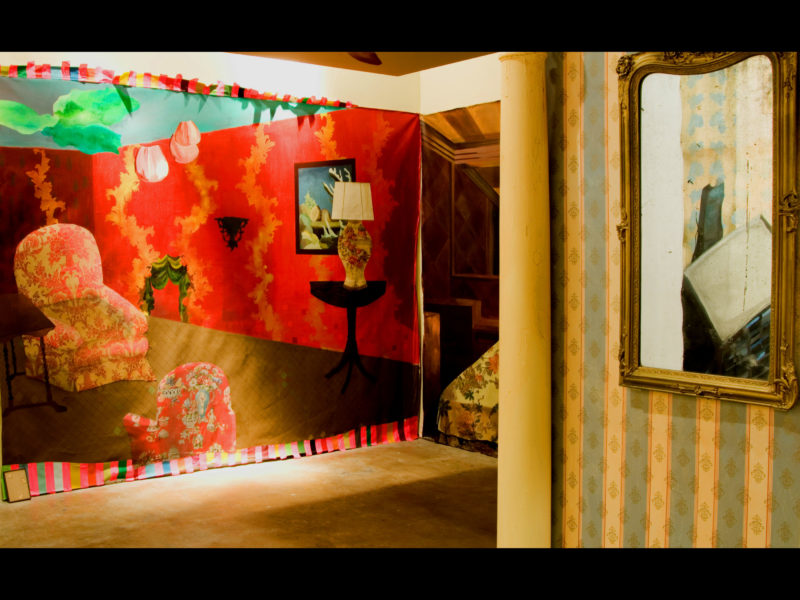Archive
Erin Curtis House Painting
Artist Statement
“In my work, I describe a view of bourgeois America that communicates an experiential rather than factual reality. Confusing private and public, melding the handcrafted with the anonymously mass-produced,I entangle the culture of refinement with the reality of mass consumption. As a painter, I am interested in both the two-dimensional, represented space of the canvas, as well as the ‘real,’ three-dimensional space that one stands in and moves through. I strive to make connections between different types of spaces and memory, while creating pieces that are architecturally specific.These works are at once welcoming and claustrophobic, a fantastical mix of uncanny seductiveness and unsettling archetypes, exploring the contradictions of bourgeois longings, the clash between our quotidian reality and our romantic invented histories.
The surfaces of my large paintings vary between dense layers of paint, transparent washes, and collaged fabrics, and come together to form unified images that can also be read as studies in color, form and abstraction. The large paintings lie on the wall like theater backdrops, a mix between Romanticism and Modernism, and contain disjointed stories told through collective signs and symbols that balance between desire and repulsion.
The room is embraced as a site to explore rendered physical space, as well as psychologically charged ideas of what a house is. The dream of owning one’s own home is still a potent symbol of the American Dream, proof of material success, stability and family happiness. The home is the locus of childhood memories and a space we often carry with us throughout our lives, whether we accept that space as an ideal or a burden. The life-size paintings from theHouse Painting series depict frozen interiors, dusty, abandoned and subversive in their empty promise of space. Applied pattern operates both as meditative and menacing elements in the rooms, sometimes offering order and relief, other times challenging the eye with an aggression that threatens to take over the picture plane.
Just as the homes we live in shape the way we experience the world, they also stand as physical symbols of what we value as a society. At this time in history, in America, the question of what we value, collectively and individually, seems to be particularly in flux. With a serious, but tongue-in-cheek manner, I tangibly explore ideas that shape the places I live, challenging the convenient contradictions of American ideals and reality, reflecting a sharper, truer image of the culture I know.”

